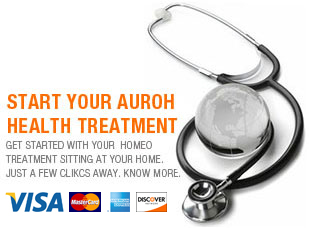|
|
||||||||||||||||||||||||||||||||||||
Disease Conditions
- Abscess
- Acne
- Addiction
- Adenoid Hypertrophy
- Allergic Rhinitis or Hay Fever
- Alopecia Areata
- Alzheimer’s Disease
- Amoebiasis
- Anxiety
- Asthma
- Backache
- Bed-Wetting-Enuresis
- Brain-Tumour
- Cataract
- Cirrhosis of Liver
- Conjunctivitis
- Constipation
- Dengue
- Depression
- Diabetes Mellitus
- Diseases of Prostate
- Eczema
- Epilepsy
- Erectile-Dysfunction
- Gallstones
- Goitre
- Gynaec
- Hepatitis
- Hepatitis-a
- Hepatitis-b
- Hepatitis-e
- Hyperthyroidism
- Hypothyroidism
- IBS - Irritable Bowel Syndrome
- Infertility
- Infertility FAQ
- Male Infertility
- Male Infertility FAQ
- Women Infertility
- Lichen Planus
- Lipoma
- Meningitis
- Menstrual-Disorders
- Migraine
- Molluscum-Contagiosum
- Nasal-Polyps
- Neoplasm
- Nephrotic Syndrome
- Neuralgia
- Osteo Arthritis
- Otitis
- Piles or Hemorrhoids
- Premature-Ejaculation
- Psoriasis
- Rheumatoid Arthritis
- Ringworm
- Schizophrenia
- Sinusitis
- Spondylitis
- Styes
- Tarsal Cyst-Chalazion
- Tonsilitis
- Typhoid
- Urinary-Tract-Infection
- Urticaria
- Vertigo
- Vitiligo
- Warts
Auroh Health Horoscope
Disease A - Z > Eczema > Homeopathic treatment for Eczema
Homeopathy treatment for Eczema
|
||||||||
About Eczema
The word Eczema is derived from the Greek word “ekzein” which means “boil out” as Eczema mostly begins as tiny blisters or hives, as if the skin is bubbling or boiling out from inside.
Basically there is inflammation of the epidermal layer of the skin which develops into a skin rash. Also know as Dermatitis, Eczema or Dermatitis is very common, some sources are of the view that half the world population will have it at one time or another. It often develops as infantile or baby Eczema which frequently diminishes but may continue to adulthood.
Eczema is a general term for many types of skin inflammation, also known as dermatitis. The most common form of eczema is Atopic dermatitis (some people use these two terms interchangeably). However, there are many different forms of eczema.
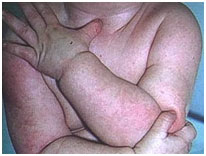
Eczema affects people of any age, race, and creed although the condition is most common in infants. Eczema generally resolves permanently by the age of 3 yrs in about half of affected infants. In others, the condition tends to recur throughout life. People with eczema often have a family history of other allergic conditions, such as asthma or hay fever. Up to 30% of children and 4%-6% of adults are believed to have eczema. The most common trigger is after a vaccination, or due to some food allergy.
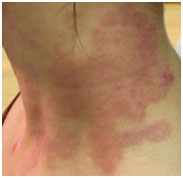
Who is affected by eczema ?
Eczema affects probably 15-25% of the world population and is becoming more common for reasons unknown. The frequency may vary throughout the world. Eczema is easily recognized by the dermatologist. Most commonly, eczema presents itself in the first six months of life, generally referred to as infantile Dermatitis. The condition can wax and wane over the years with frequent flare-ups. No specific tests are available to confirm the diagnosis. It has been found that the majority of cases have an increase in the serum Ig E level which is a sign of increased immunological activity.
Eczema Causes ?
The exact cause of eczema is unknown, but an abnormal function of the immune system is believed to be one of the main reasons. Few forms of eczema can be triggered by substances that come in contact with the skin in day to day life, such as soaps, cosmetics, clothing, detergents, jewelry, or sweat. Few substances in the environment can act like allergens (substances that cause allergic reactions, like pollens, fur, lead etc) may also cause outbreaks of eczema. Changes in environmental temperature or humidity, psychological stress is also considered as causing a flare up of eczema in few individuals.
Eczema Symptoms
Symptoms can be totally unique and individualized to the sufferer, affecting no two people the same way. These are the most common symptoms of Eczema, sometimes know as Contact Dermatitis.
- Skin rashes, dry skin
- Redness and inflammation and swelling
- Itchy dry skin. Itching is always a common symptom. If its not itchy, then probability is its not Eczema
- In Acute and severe form of Atopic Eczema there may be heat and temperature disturbances as the whole body becomes involved
- Cracks on skin, scaly and flaking
- Bleeding and weeping skin, with sticky or watery discharge
- Burning with stinging pain
- Feeling low and down can lead to depression in extreme cases, itching and irritation of skin causing behavioral problems in kids
- Eczema blisters, these may occur in some forms of Eczema
- Eczema scars can occur from perpetual scratching, leaving behind blackish or brownish hyper pigmented spots
Is Eczema contagious?
Eczema is not contagious; one cannot catch it from someone else. However, eczema can get infected. The lesion or rashes can get infected to bacterial infection due to breaks in the skin caused by continuous scratching; this condition becomes difficult to cure
Eczema Types ?
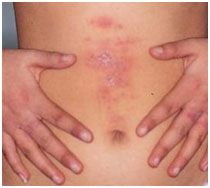
Atopic dermatitis
Atopic dermatitis is the most common type of Eczema, and sometimes people use the two terms interchangeably. Atopic dermatitis is a chronic skin disease characterized by itchy, dry, inflamed skin. The body’s abnormal immune system is believed to be the cause of this type of eczema. The condition tends to wax and wane, depending upon exposures to triggers or causative factors. Atopic dermatitis, affects about 20% of infants and 5-6% of adults in the U.S. Approximately two-thirds of those who develop the condition are below 1 yr of age. When the disease starts in infancy, it is commonly termed infantile eczema. This type of eczema has a tendency to run in families, and people who develop the condition often have a family history of allergic conditions such as asthma or hay fever
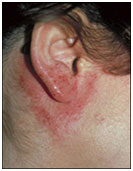
Contact eczema
Contact eczema (contact dermatitis) is a local reaction caused by some allergen which comes into contact with the skin of the particular part. The rashes are marked by redness, itching, and burning. Other examples of contact eczema include reactions to laundry detergents, nickel (present in jewelry), cosmetics, fabrics, clothing, and perfume. Due to the varying number of substances with which individuals have contact, it can be difficult sometimes to determine the trigger for contact dermatitis. Often it is referred to as allergic contact eczema
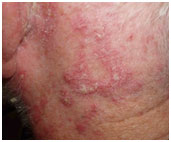
Seborrheic eczema
Seborrheic eczema or seborrheic dermatitis is a form of skin inflammation of unknown cause. The signs and symptoms of this type of eczema are yellowish, oily, scaly patches of skin on the scalp, face, and occasionally other parts of the body. The skin can peel of in scabs. Dandruff and "cradle cap" in infants are examples of seborrheic eczema. The common place for seborrheic eczema to inflame and cause rashes is the face at the creases of the cheeks and/or the nasal folds. Itching is generally mild or absent in this form of eczema. There can be a family history of similar condition with patients suffering from such kind of eczema.
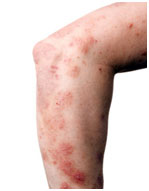
Nummular eczema
Nummular eczema or nummular dermatitis is characterized by coin-shaped, rounded patches of inflamed skin. The most commonly location is on the arms, back, buttocks, and lower legs—the lesions may be crusted, scaling, and extremely itchy. This form of eczema is not very common and occurs most frequently in elderly people. Nummular eczema is generally a chronic condition. A Personal or family histories of atopic dermatitis, asthma, or allergies have greater chances to encounter such condition
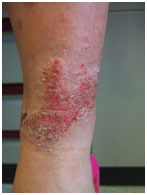
Neurodermatitis
Neurodermatitis, also known as lichen simplex chronicus, is a chronic skin inflammation caused by a scratch-itch cycle that is triggered with a localized itch (such as an insect bite) that becomes intensely irritated, and itchy when scratched. Women are common victims to these condition then men, and the condition is most frequently found in people aged 25-55. This form of eczema leads to scaly patches of skin on the head, lower legs, wrists, or forearms
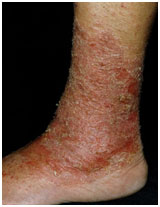
Stasis dermatitis
Stasis dermatitis is a skin inflammation and irritation on the lower legs, generally caused due to the circulatory problem known as venous insufficiency, in which the function of the valves within the veins has been compromised. Stasis dermatitis occurs mostly in the middle-aged and elderly people, with roughly 6%-7% of the population over age 50 being affected by the condition. With advancing age the risk of acquiring stasis dermatitis increases. Symptoms include itching and/or reddish-brown discoloration of the skin on one or both the legs.
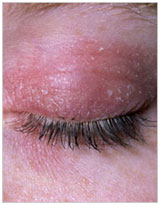
Dyshidrotic eczema
Dyshidrotic eczema or dyshidrotic dermatitis is an inflammation and irritation of the skin on the palms of hands and soles of the feet marked by clear, deep blisters that itch and burn. The cause is unknown. Dyshidrotic eczema is also known as vesicular palmoplantar dermatitis, dyshidrosis, or pompholyx. Around 20-25 % of people get affected with this form of eczema, and its more common during the spring and summer months and in warmer climates. Males and females are equally affected, and the condition can occur in people of any age.
Eczema Treatment ?
The aim for the treatment of eczema is to prevent and reduce itching, inflammation, and to control worsening of the condition. Treatment of eczema may involve both lifestyle changes, like dietary restrictions, avoiding certain type of cloth, jewelry etc and the use of medications. Treatment is usually based upon an individual's age, overall health status, and the type and severity of the condition
Auroh Homoeopathic treatment for Eczema
At AUROH we emphasizes that Eczema is not an external but an internal malady, arising out of faulty immune system with genetic predispositions. Needless to say the disease is deep seated and calls for well planned deep acting medicines. Conventional treatment with steroid or other topical applications can suppress (that is what they call ‘manage’) the symptoms of the disease but cannot cure the disease. On the other hand, it is homoeopathy that has potential to stimulate body’s natural healing capacity and to restore the disturbed immune system
Homeopathy treatment for Eczema
Through Homeopathy eczema treatment has been found to be extremely effective. Physicians at AUROH have worked with Eczema patients for over 15 yrs. Our well researched medications have changed the treatment protocol totally. In homeopathy we use natural remedies to cure eczema with out any side effects.
How does homeopathic eczema work ?
- It stimulates body’s own healing process
- It works at root level and restores deviated immunity back to normalcy
- It works by addressing the genetic tendencies
- homeopathyuses natural medicinal substances in ultra-minute quantity rendering a treatment that is extremely effective yet absolutely free from any side-effects whatsoever
In homeopathy, eczema has been considered, understood and treated as an external manifestation of an internal disorder. In other words, eczema is a result of a reactive process of the skin, which may be caused by external or internal factors. Eczema is more of an end result and not a disease by itself. The characteristic reaction shows up at the level of skin in the form of eczematous rash. Any attempt to treat eczema with local application of creams or ointments on the skin, assuming that it is a skin-deep disease, may prove ineffective in the long run. Eczema needs to be tackled at a deeper level in order to treat it from the roots. This is best done with the homeopathic treatment
How much time does it take to cure eczema ?
Eczema is an obstinate and chronic disease. There is no shortcut to its cure.
The length of treatment varies form case to case, depending of the following factors
- Duration of Eczema
- Areas affected
- Extent of spread ,Previous medication (Extensive use or oral cortisone may delay the course of treatment)
- General health and associated diseases
Most patients observe positive results in about 4 to 6 weeks
View Eczema case study | Read Eczema Testimonial
Treated Cases
| talk to our doctors right now | 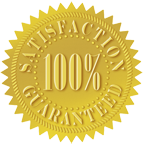 |
|
| consult our experts | ||
 |
leave your number we will call you back |
|
| start auroh health treatment |
Your doctor is just a click away |
Treatment |





